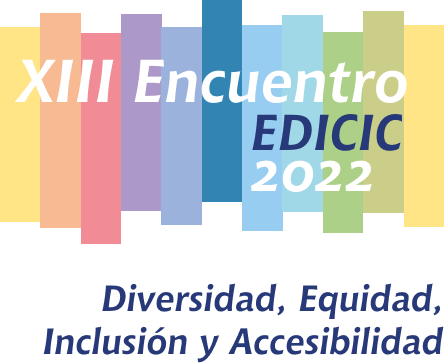La cadena de bits a la luz de la autenticidad: el contenido binario como elemento central de la composición del registro nativo-digital
DOI:
https://doi.org/10.62758/re.v2i2.114Palabras clave:
Archivística, Archivística Computacional, Documento de Archivo DigitalResumen
Este artigo dedica-se à análise dos fundamentos teóricos da Ciência da Computação acerca da arquitetura de computadores no escopo de transmissão do documento de arquivo nato-digital e da Arquivologia relacionados à autenticidade de documentos arquivísticos digitais. Este vínculo entre as duas áreas supracitadas origina a Arquivologia Computacional, visto que desde o final do século XX nota-se o crescimento da adoção e gestão de documentos arquivísticos digitais. Contudo, o tema arquitetura do documento de arquivo nato-digital ainda permanece objeto de estudo pouco explorado, onde demonstra-se a relação fundamental com o conteúdo binário que é apontado na literatura como vulnerável a perdas de dados de forma e conteúdo de acordo com eventos e, portanto, um desafio para a preservação digital no âmbito da Arquivologia. Logo, cabe refletir acerca da seguinte indagação: “qual a relação do conteúdo binário com a autenticidade do documento de arquivo nato-digital? Esta pesquisa de natureza qualitativa foi operacionalizada através de pesquisa bibliográfica de obras brasileiras e estrangeiras da Arquivologia e da Ciência da Computação que abordam, sequencialmente, documentos de arquivo digitais, autenticidade, arquitetura de computadores e aritmética binária. Os resultados sugeriram que não necessariamente a forma do documento está atrelada à autenticidade e que em razão do conteúdo binário estar sempre sujeito a alterações que ponham em risco sua integridade e simultaneamente ser o elemento representante da originalidade do documento, deve ser preservado em um ambiente seguro de adulterações para autenticações de cópia de um documento que tivera seu complemento digital comprometido.
Citas
Abreu, J. P. L. (2018). Existir em bits: arquivos pessoais nato-digitais e seus desafios à teoria arquivística. São Paulo: Associação dos Arquivistas de São Paulo.
Bahiana, M. (2009). Introdução à Computação Científica em C. Rio de janeiro: Universidade Federal do Rio de Janeiro.
Bein, B. (2006). Entropy. Best Practice & Research Clinical Anaesthesiology, 20 (1). DOI: https://doi.org/10.1016/j.bpa.2005.07.009
Bellotto, H. L & Camargo, A. M. A. (2012) Dicionário de Terminologia Arquivística. (3.ed.) São Paulo: Associação dos Arquivistas Brasileiros.
Cook, T. (2001). Archival science and postmodernism: new formulations for old concepts. Archival Science, 1, pp.3-24. DOI: https://doi.org/10.1007/BF02435636
Dictionary of Archives Terminology, s.v. Recuperado em 21-10-2022, https://dictionary.archivists.org/index.html.
Duranti, L. (2015). Diplomática: novos usos para uma antiga ciência. Acervo, 28(1), pp.196-215.
Duranti, L. (2009). Encyclopedia of Library and Information Sciences (4ª ed.) Londres, Taylor & Francis Group.
Duranti, L. & Preston, R. (2008). International Research on Permanent Authentic Records in Electronic Systems (InterPARES) 2: Experiential, Interactive and Dynamic Records. Padova: Associazione Nazionale Archivistica Italiana.
Duranti, L. (2010). Structural and formal analysis: the contribution of diplomatics to archival appraisal in the digital environment. In Hill, J. The Future of Archives and Recordkeeping: A Reader. (pp. 65-68). Londres: Facet.
Duranti, L. & Macneil, H. (1996). The Protection of the integrity of eletronic recors: an overview of the UBC-MAS research Project. Archivaria: ACA, 42, pp.46-67.
Heredia Herrera, A. (2017). Forma y formato de los documentos de archivo. Boletín ANABAD, LXVII (4), pp. 39-51. Recuperado em 2022-08-01, de https://dialnet.unirioja.es/servlet/articulo?codigo=6449987
International Council of Archives (1997). Guide For Managing Electronic Records From an Archival Perspective.
Institute of Electrical and Electronics Engineers (2020). International Standard - Floating-point arithmetic.
Jenkinson, H. (1937). A Manual of Archive Administration. (2ª ed.) Londres: Percy Lund, Humphries & Co.
Lemieux, V. (2016) Building Trust in Information Perspectives on the Frontiers of Provenance. Vancouver: Springer.
Lemieux, V. (2021) Building Decentralized Trust. Vancouver: Springer. DOI: https://doi.org/10.1007/978-3-030-54414-0
Marciano, R. (2018). Archival records and training in the age of Big Data. Perspectives on the Future of Library and Information Science Education, 44b, pp.179-199. DOI: https://doi.org/10.1108/S0065-28302018000044B010
Mittelbach, A. & Fischlin, M. (2021). The Theory of Hash Functions and Random Oracles. Darmstadt: Springer. DOI: https://doi.org/10.1007/978-3-030-63287-8
Multilingual Archival Terminology. International Council on Archives (2012). Recuperado em 21-10-2020, de http://www.ciscra.org/mat/mat.
PAYNE, N. (2018). Stirring The Cauldron: Redefining Computational Archival Science (CAS) For The Big Data Domain. IEEE International Conference On Big Data. DOI: https://doi.org/10.1109/BigData.2018.8622594
Rondinelli, R. C. (2011) O Conceito de documento arquivístico frente à realidade digital: uma revisitação necessária. Tese de doutorado, Instituto Brasileiro em Ciência e Tecnologia, Universidade Federal Fluminense, Niterói.
Santos, B. V., Inarelli, H. C. & Sousa, R. T. (2007). B. Arquivística: temas contemporâneos. Distrito Federal: Senac.
Santos, J. C., Gibim, G. F. B (2015). Cálculo Numérico. Londrina: Editora e Distribuidora Educacional S.A.
Stallings, W. (2010). Arquitetura e organização de computadores. (8.ed.) São Paulo: Pearson Pratice Hall.
Tognoli, N. B. A. (2014). Construção teórica da Diplomática: em busca da sistematização de seus marcos teóricos como subsídio aos estudos arquivísticos. São Paulo: Editora UNESP.
Ramalho, R. A. S. (2011) Tecnología y sociedad: responsabilidad y retos de los profesionales de la información. Revista EDICIC, 1 (2), pp.122-135. Recuperado em 2022-08-01, de https://ojs.edicic.org/index.php/revistaedicic/article/view/41.
SARACEVIC, T. (1996). Ciência da informação: origem, evolução e relações. Perspectivas em ciência da informação, 1(1), p.41-62.
Descargas
Publicado
Cómo citar
Número
Sección
Licencia
Derechos de autor 2022 Revista EDICIC

Esta obra está bajo una licencia internacional Creative Commons Atribución 4.0.
La Asociación posee los derechos de autor de los textos que publica y adopta la licencia Creative Commons, CC BY 4.0 DEED Atribución 4.0 Internacional (https://creativecommons.org/
Usted es libre de:
- Compartir: copiar y redistribuir el material en cualquier medio o formato para cualquier propósito, incluso comercialmente.
- Adaptar: remezclar, transformar y construir a partir del material para cualquier propósito, incluso comercialmente.






